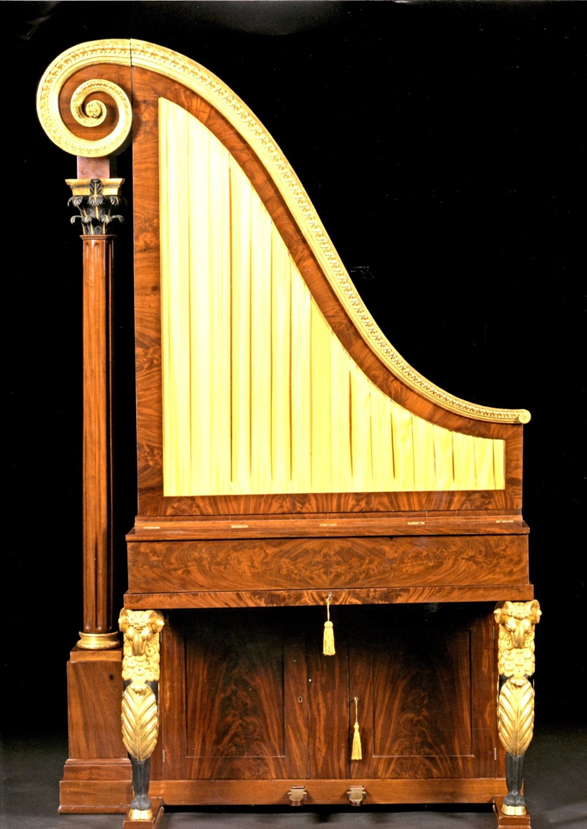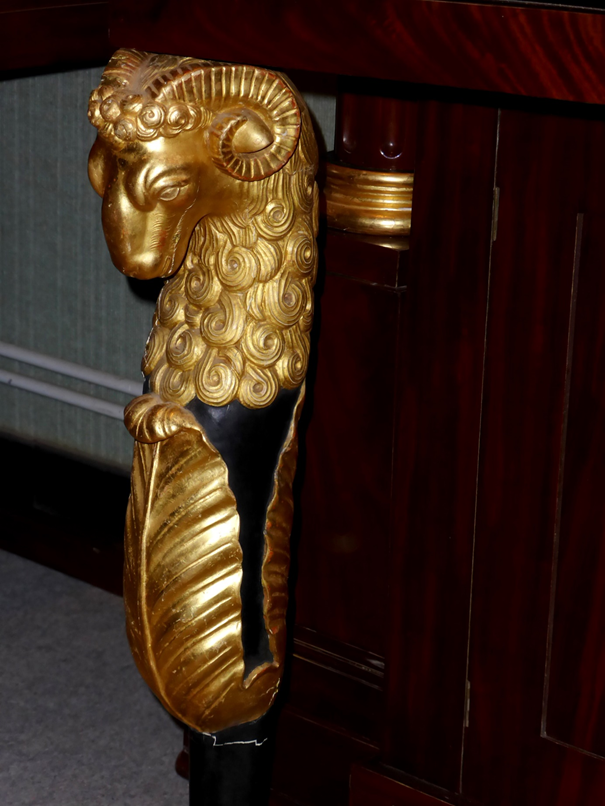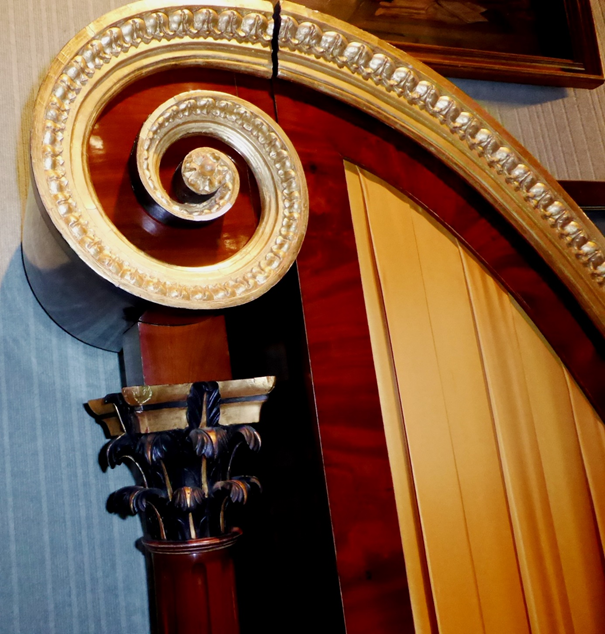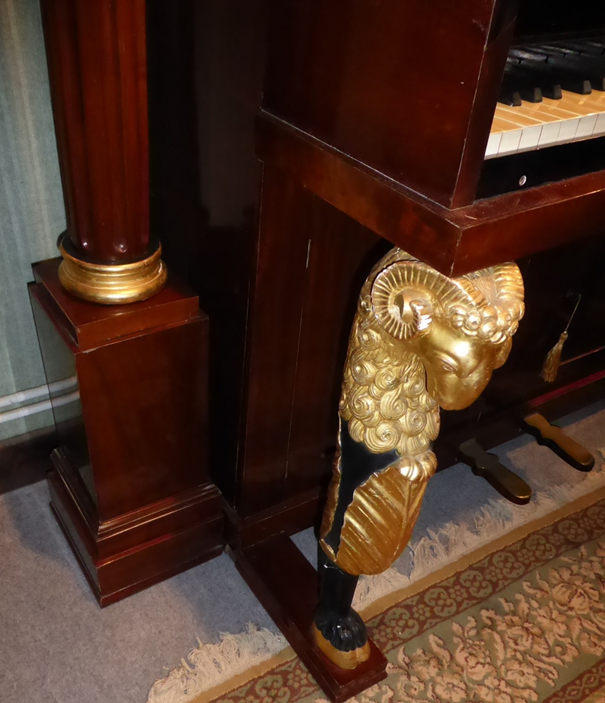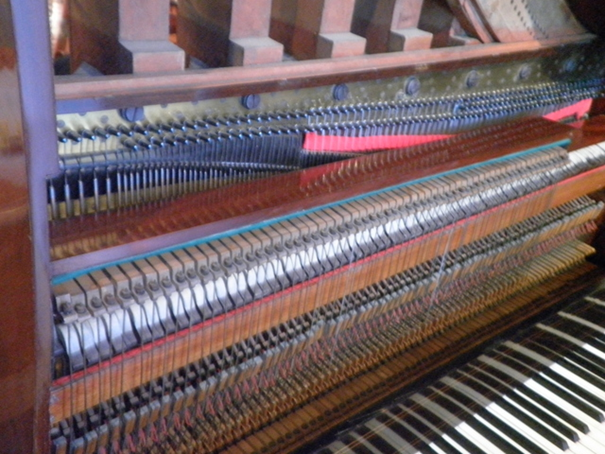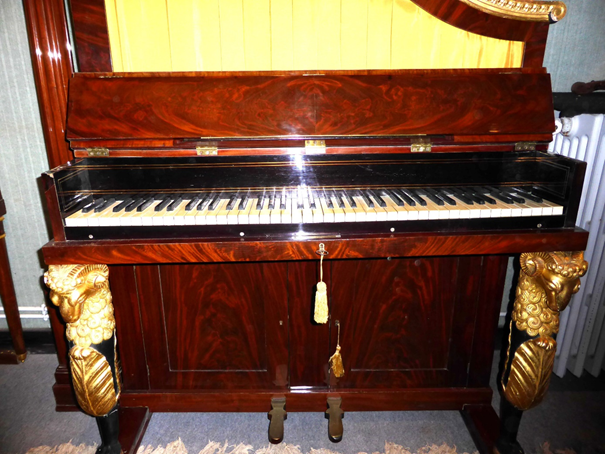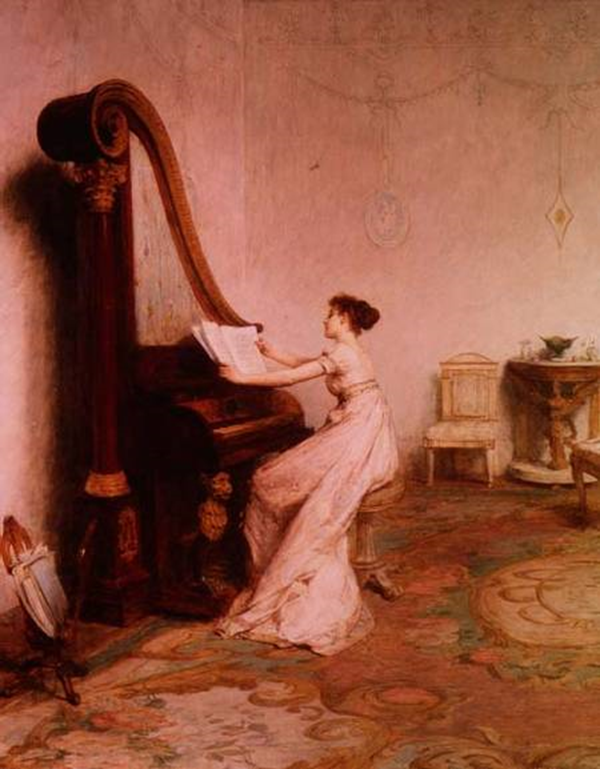PIANO GIRAFFE FIRST EMPIRE
The piece of furniture is made of Cuban mahogany, veneered or solid depending on the parts. A carved and gilded wooden cornice wraps around a butt at the top of the instrument. This rests on a fluted column, surmounted by a Corinthian capital, and resting on a mahogany stylobate. The console is supported by two ram-headed caryatids, in gilded wood on a black background.
Typical of the Empire period, the piano-giraffe is the vertical form of the concert piano. The first models were probably made in Vienna around 1800. Their decorative qualities clearly favored over other more classically shaped instruments ensured their success in the salons of European capitals. Adapted by cabinetmakers to the fashion, game and aesthetics of the clientele, they are played mainly in the Netherlands, Prussia and France. The model presented here is of French aesthetics, among other things by the presence of two pedals (forte and una corda) unlike Austrian instruments which generally had between three and six stops.)
The six-and-a-half-octave keyboard (C – G) with ivory-veneered naturals and ebony accidentalss is surmounted by a rosewood front inlaid with a double brass fillet.
The table and the mechanism probably date from the second half of the 19th century and come from the workshop of J.J. Nissen in Amsterdam, whose signature appears on the windchest. The original design of giraffe pianos, reputed to be not very functional, often gave rise to this kind of modernization. This is the so-called “bayonet” system, invented by Alphonse Blondel in Paris, factor of the Imperial Academy of Music. The label of a dealer, J.A. Buschen in Amsterdam, is visible inside the crate.
Usual restorations on the gilding and the varnish have been carried out, as well as a replacement of the strings. The instrument works but requires adjustments.
The link with Corneille Charles Emmanuel van der DOES (1769-1827) is made possible thanks to a comparable instrument preserved in London at the Victoria and Albert Museum. The materials, proportions and ornaments are of the same nature, except that the cover of the keyboard is rounded, the caryatids are sculpted with the heads of lions and not rams, and the two expression pedals are “at the French ” ; but the architecture, the workmanship and the choice of species indicate a common workshop.
To date, we have listed three instruments bearing the signature of Cornelius van der DOES: A square piano, kept at the Metropolitan Museum of Art in New York, the model mentioned above, at the Victoria and Albert Museum in London and a third sold in public sale in Paris.
Height: 230cm Width: 117cm.
Bibliography:
Pascale Vandervellen: The style piano in Europe, from its origins to 1850, Mardaga ed. Cork 1994. pp.103-104…
Martha Novak Clinskale: Makers of the Piano 1700-1820, Oxford University Press, New York 1993.
Philip James: Early Keyboard Instruments, P. Davies ed. London 1930.
Rosamund Harding: The Pianoforte. Da Capo press, London 1933.
Howard Scott: Victoria and Albert Museum, Catalog of Musical Instruments, Vol 1. p.117.
